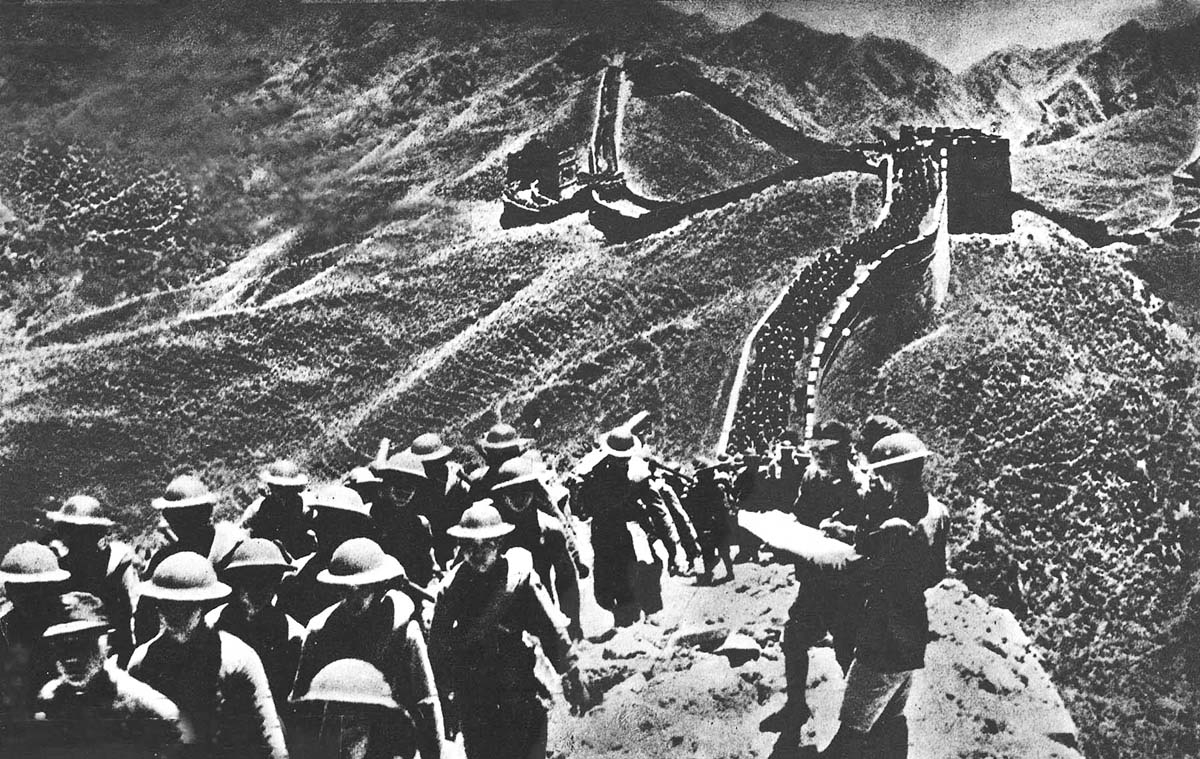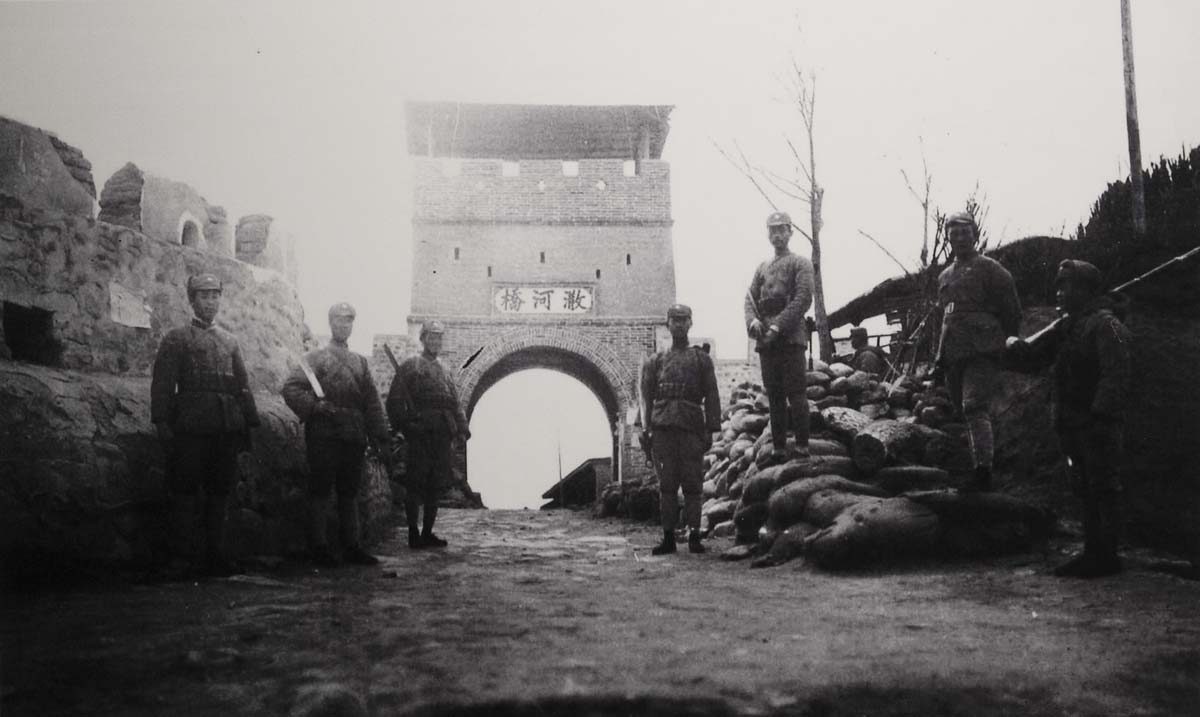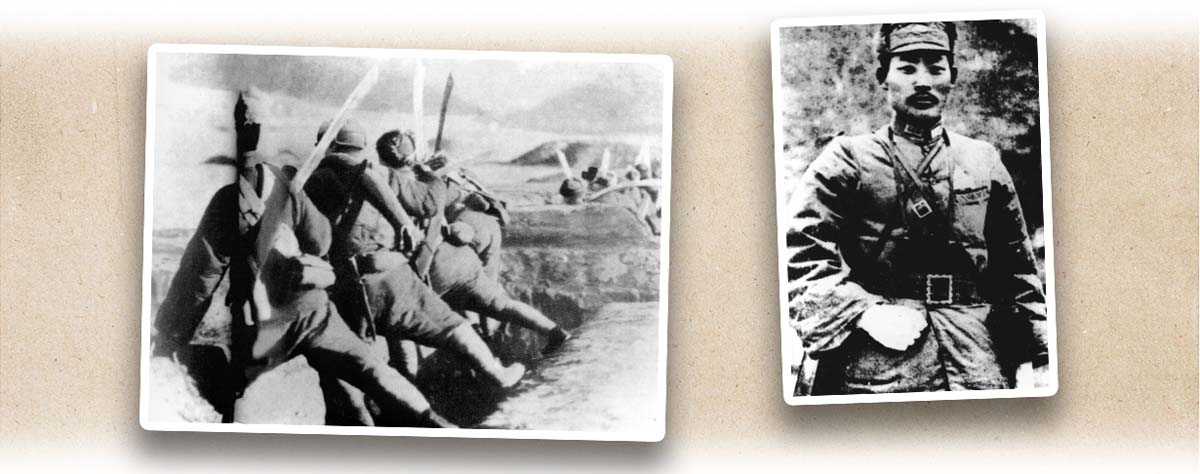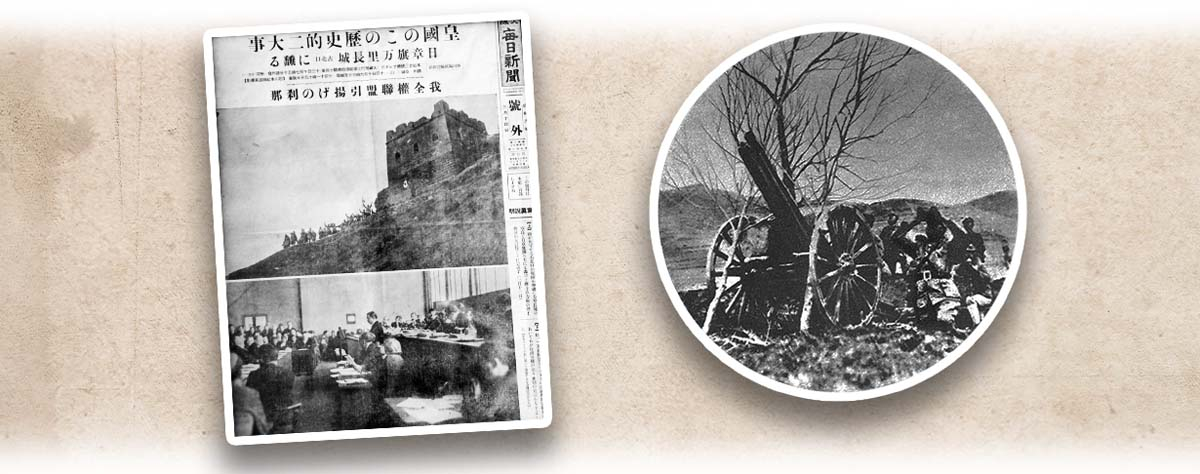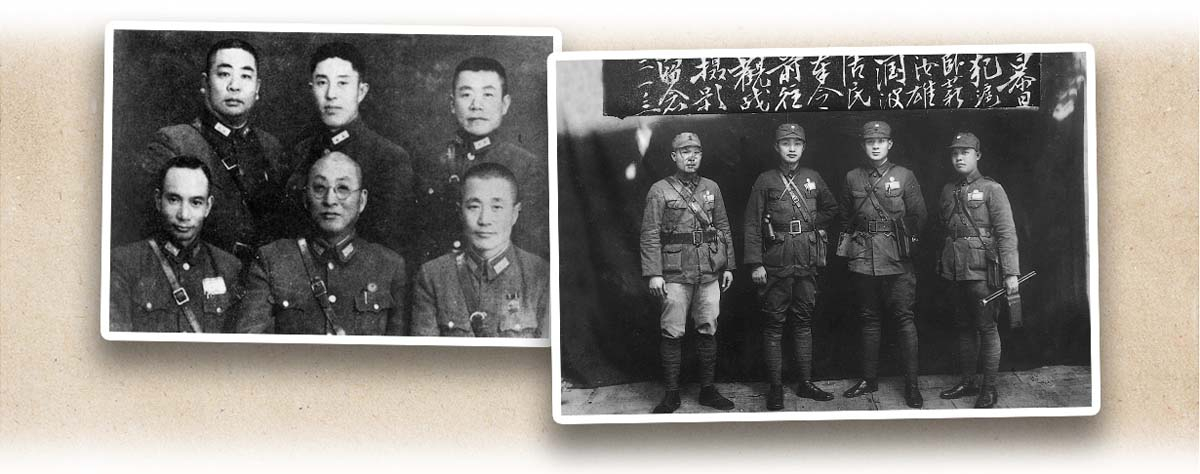After the establishment of the puppet state of Manchukuo (偽滿洲國), Japan was eager to enter the North China Plain and decided to first occupy Rehe Province (熱河), the frontier between Northeast and North China. To this end, the Japanese army first captured the Shanhai Pass (山海關) in early January 1933 before attacking Rehe in three directions. The whole province fell in less than two months under Japanese rapid advancement and the troops even reached the Great Wall. The Defence of the Great Wall started when the army and civilians in North China rose to resist.
The Defence of the Great Wall was a campaign launched by the Chinese army and civilians to resist the Japanese army along the Great Wall which lasted from March to May 1933. Although the Shanhai Pass was lost, the other passes of the Great Wall were still under Chinese control. The Defence of the Great Wall began at the Lengkou Pass (冷口). On 4 March, the Lengkou Pass was occupied by the Japanese army, but later recaptured by the National Revolutionary Army (NRA) after an immediate counterattack. After that, the two armies engaged many times at the Lengkou Pass, each having victories and defeats. Such a standstill lasted more than one month. Meanwhile, fierce battles also broke out at other sections of the Great Wall. At Xifengkou Pass (喜峰口), a night attack launched by the NRA killed and wounded more than 1,000 Japanese soldiers and destroyed several Japanese artillery positions. Chinese and Japanese troops also fought bloody battles lasting several days near the Gubeikou Pass (古北口) and the Nantianmen Pass (南天門). The NRA was in close combat with the Japanese many times and managed to hold the Japanese army outside the Great Wall. The Japanese army later captured the Gubeikou Pass at a high cost of more than 2,000 troops.
Although the Japanese army gained some victories, it was hard for it to launch a large-scale offensive operation due to the NRA’s brave resistance along the Great Wall. Meanwhile, the Nationalist Government was busy with suppressing the Communists in the south. Therefore, the two countries signed a temporary truce agreement in Tanggu (塘沽).
|
|
Which officers fought squarely with the invaders during the Defence of the Great Wall against Japanese aggression? How to evaluate these officers as many of them suppressed the Communists for a long time? |
|
|
See answer below. |
The Japanese army on the Shanhai Pass of the Great Wall in January 1933. In 1931, the Japanese army occupied the three northeastern provinces following the September 18th Incident. It then continued to push forward and captured the Shanhai Pass in January 1933.
In March 1933, the Japanese army captured Chengde (承德), the capital of Rehe.
This photo shows Chinese army marching to the Nankou Pass (南口) of the Great Wall. At the beginning of 1933, as the Japanese army accelerated its invasion of North China, the Chinese army rushed to safeguard the important passes of the Great Wall there.
The Chinese troops staying in position at the Great Wall. On 4 March 1933, the Japanese army attacked the Lengkou Pass, which marked the start of the Defence of the Great Wall.
The Chinese troops stationing near the Xifengkou Pass of the Great Wall. On 9 March 1933, the Japanese troops attacked the Xifengkou Pass, marking the start of the Battle of the Xifengkou Pass.
In the bloody Battle of the Xifengkou Pass, the Broadsworded Warriors dealt a heavy blow to the Japanese army. Left: the Broadsworded Warriors of the 29th Corps of the NRA on the Great Wall. Right: Zhao Dengyu (趙登禹) led the Broadsworded Warriors to launch a night attack on the Japanese army and achieved a great victory.
On 9 March, the Japanese army attacked and seized the Xifengkou Pass. The Brigade Commander Zhao Dengyu was ordered by Song Zheyuan (宋哲元), the Commander of the 29th Corps of the NRA, to rush to the rescue. On 10 March, Zhao fought fiercely against the Japanese army at the Xifengkou Pass and selected 500 soldiers to form the Broadsworded Warriors. He personally led the warriors carrying only Chinese broadswords and grenades and split them into two routes to raid the Japanese cavalry and artillery troops late at night on 11 March. Taking advantage of the Japanese army’s lack of preparation, the Broadsworded Warriors threw grenades at the Japanese camp and then killed the Japanese troops with Chinese broadswords. During this attack, more than 1,000 Japanese troops were killed and wounded. Meanwhile, 11 tanks, 6 armoured vehicles, 18 cannons, 36 machine guns, and 1 plane were seized. Only 23 of the 500 members of the Broadsworded Warriors survived. The Japanese cavalry and artillery troops were completely wiped out overnight, and the NRA retook the Xifengkou Pass. After the event, Japanese newspaper Asahi Shimbun commented that this was the most humiliating defeat in the 60 years since Emperor Meiji built the army and that the honour of the Imperial Japanese Army had been lost outside Xifengkou Pass. The Japanese army occupied the Xifengkou Pass again on 17 March, but later retreated on 24 March. During the Defence of the Great Wall, the Chinese and Japanese armies fought back and forth over the control of the Xifengkou Pass.
On 9 March, the Battle of the Gubeikou Pass broke out. The photo shows Japanese tanks and armoured vehicles used in the battle.
Left: Japanese newspaper Mainichi Shimbun’s report on the Battle of the Gubeikou Pass. Right: the Chinese army’s artillery position at the Nantianmen Pass. Both the Gubeikou Pass and the Nantianmen Pass were important battlefields in the Defence of the Great Wall, and Japanese warplanes were mobilised to fight with the ground troops in the assaults. The NRA rose and put up a strong fight, but was forced to retreat in the end. In May, the two countries signed a truce.
In the Defence of the Great Wall, the NRA officers and soldiers were defending their land heroically. Left: a group photo taken in Chongqing (重慶) in the winter of 1942. They are some of the generals of the 17th Corps of the NRA who participated in the Defence of the Great Wall in 1933 (front row from the left: Huang Jie﹝黃傑﹞, Xu Tingyao﹝徐庭瑤﹞, and Du Yuming﹝杜聿明﹞; back row from the left: Liu Jiashu﹝劉嘉樹﹞, Zheng Dongguo﹝鄭洞國﹞, and Qiu Qingquan﹝邱清泉﹞). Right: Wang Runbo (﹝王潤波﹞, second from left), the Commander of the 149th Regiment of the 25th Division of the NRA during the Defence of the Great Wall. He sacrificed his life for the country in the Battle of the Gubeikou Pass on 9 March 1933.
During the Defence of the Great Wall, women’s groups rushed to make bandages to support the NRA at the front. It showed that the Chinese army and civilians fought shoulder-to-shoulder against the enemy.
|
|
Which officers fought squarely with the invaders during the Defence of the Great Wall against Japanese aggression? How to evaluate these officers as many of them suppressed the Communists for a long time? |
|
|
In the Defence of the Great Wall, some brave officers emerged. For example, He Zhuguo (何柱國), Shi Shian (石世安), and An Dexin (安德馨) defended the Shanhai Pass in January 1933. And those participated in the Defence of the Great Wall, included Zhao Dengyu, Wang Changhai (王長海), Dong Shengtang (董升堂), Song Zheyuan, Tong Linge (佟麟閣), Xu Tingyao, Feng Zhian (馮治安), Zhang Zizhong (張自忠), Liu Ruming (劉汝明), Guan Linzheng (關麟徵), Huang Jie, Liu Kan (劉戡), Wang Runbo, Nie Xin (聶新), Wu Chaozheng (吳超徵), Du Yuming, Zheng Dongguo, Fang Xianjue (方先覺), Liu Jiashu and Qiu Qingquan, etc. Although some of them involved in the decade-long armed confrontations between the Kuomintang of China (KMT, 中國國民黨) and the Chinese Communist Party (CCP, 中國共產黨), and the later attacks on the CCP troops during the full-scale civil war, the evaluation of historical figures should not be one-sided, nor should they be repudiated only because of a single event. Their contributions in the War of Resistance Against Japanese Aggression should be recognised. |
Source of most photos used in this feature piece: Fotoe.




